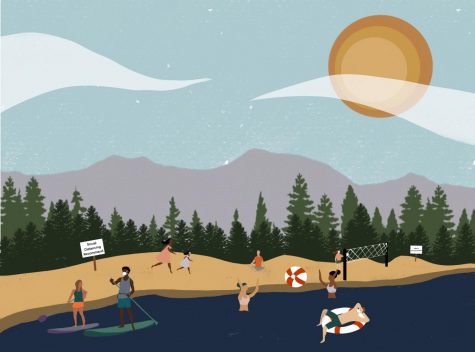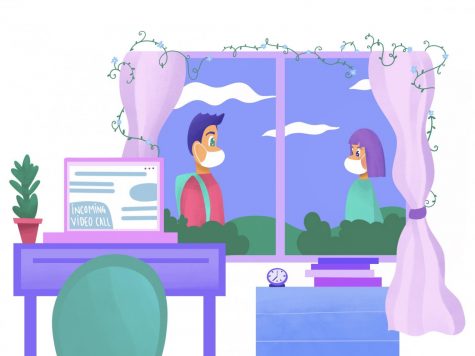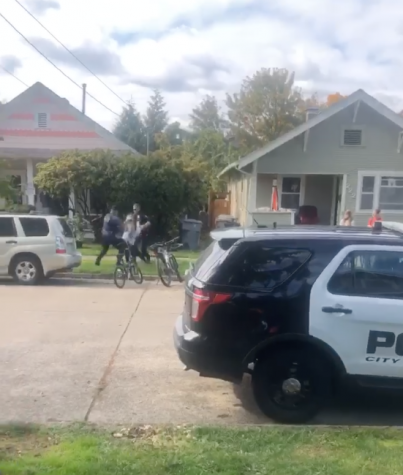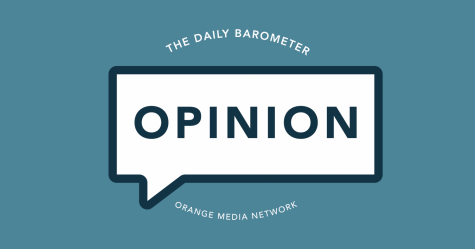Letter from the Editor: No March 30 print edition, but online presence will elevate
March 27, 2020
It’s difficult to believe that just a few weeks ago, Oregon State University students were merely encouraged to pay extra attention to hygiene and educate themselves about a novel strain of coronavirus beginning to infiltrate America. Now, we’re holed up at home and about to begin a term of remote education, working together to slow COVID-19’s progress to protect one another as much as we can.
In what I know is a difficult time of daily upheaval, I have a bittersweet change to share. I have cancelled production of the March 30 print issue of The Daily Barometer, what would’ve been the 22nd issue under my tenure as editor. Whether we print for the rest of the term after that will be determined by the Orange Media Network Advisory Board, although I personally don’t forsee anyone being able to justify it. All the content which was slated to go into the paper will go on our website and our social media just like normal, along with extra stories and graphics that we’ll now have time to produce.
This was a really hard decision for me to make. At first, the idea of cancelling print felt like abandoning a commitment. I want to ensure all of you can read the articles and columns, and take in the photos and graphics that my team puts so much time and care into creating. We are constantly dissecting the context of a multitude of situations to discern what people need and want to know, and how we can most fairly present all the facets of a particular issue. And in the past the print newspaper has been a reliable way to carry those crucial stories to many people. But in this unprecedented time, a weekly print paper is simply not the most sensible way to bring you information.
If you’ve been out and about recently, you may have noticed our March 9 issue of The Baro still on stands. You may also have noticed the cover story, which faithfully details how OSU is on the first level of a four-level plan culminating in remote delivery of education. Knowing the story’s statistics on reported cases would change shortly after publication, we made sure to specify that the numbers and OSU’s “low-risk” designation were accurate as of the time of print. As none of us have yet mastered the art of seeing into the future, we were certainly not anticipating the transition to remote education beginning only two days later, almost immediately rendering the story partially out of date. Although, if you want to keep a little piece of history, now would be the time to go grab one of those papers…
My point is, a lot of what needs to be covered right now is changing so rapidly that a real-time, online format will keep up the best. Although, please note that we will of course continue to cover non-coronavirus related topics. Online is also where the majority of you will be collecting your news from now that we’ve been ordered to stay home, so it doesn’t seem so logical to be distributing the news into places people aren’t supposed to be. To those without reliable access to Internet, I apologize that the print product will not be available. If you’re a student, you may want to check out some of the resources available to you as our day-to-day shifts online.
On the bright side, this gives us the opportunity to focus on branching out, developing more immersive storytelling with the use of interactive maps and charts, video and audio news reports and more chances to feature community content and interact with our readers, among other things. This means a more engaging and personalized delivery of news to you, and a chance to practice new skills for us. I’m super excited for this.
Financing was another factor in my decision. Continuing to print a paper funded partially by student fees didn’t seem a fiscally responsible choice, at a time when OSU’s administration is evaluating which student fees are no longer applicable and preparing to return some of those fees, and while many students are out of work for the time being.
And, importantly, delivery of the papers puts our distribution team and the people they live with more at risk of contracting the virus. It didn’t seem appropriate for me to ask that of them. While journalism is an essential service and crucial to a cohesive community, I am choosing to perform this service in the way which is safest and most efficient for my team, and for you all.
Put simply, there are a rich variety of ways to provide our community with the information needed to learn about the issues surrounding us and make sound decisions, that are more appropriately suited for these conditions than our weekly print editions. I’ll miss creating the paper anyway, though.
Take care of one another, and as always, please don’t hesitate to reach out with any questions.
Delaney Shea
























































































































